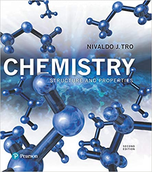?Note: Answers to all odd-numbered Problems, numbered in blue, can be found in Appendix
Chapter 0, Problem 26(choose chapter or problem)
Note: Answers to all odd-numbered Problems, numbered in blue, can be found in Appendix III. Exercises in the Problems by Topic section are paired, with each odd-numbered problem followed by a similar even-numbered problem. Exercises in the Cumulative Problems section are also paired but more loosely. Because of their nature, Challenge Problems and Conceptual Problems are unpaired.
The Units of Measurement
Use scientific notation to express each quantity with only the base units (no prefix multipliers).
a. 35 \(\mu L\)
b. 225 Mm
c. 133 Tg
d. 1.5 cg
Text Transcription:
mu L
Unfortunately, we don't have that question answered yet. But you can get it answered in just 5 hours by Logging in or Becoming a subscriber.
Becoming a subscriber
Or look for another answer
